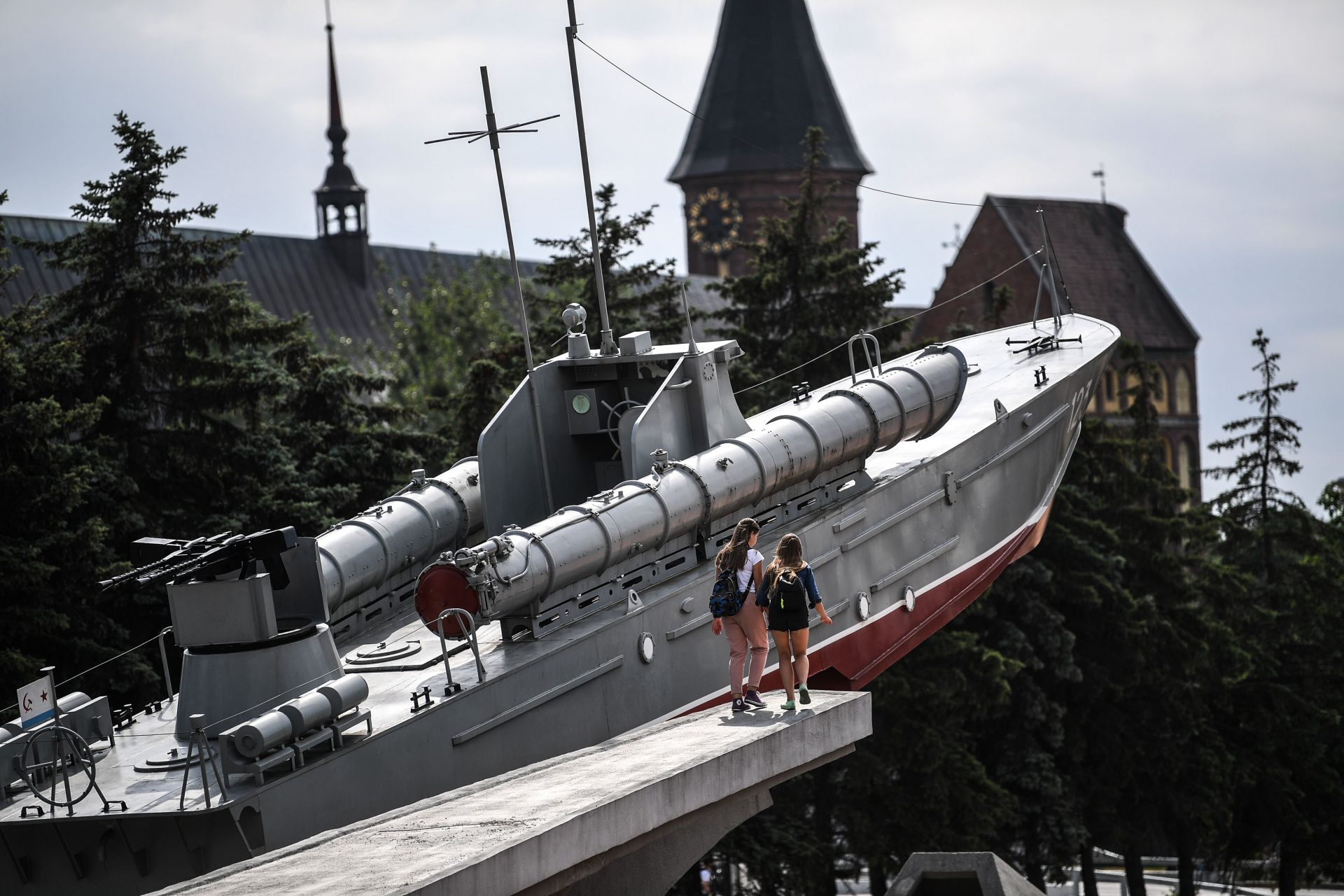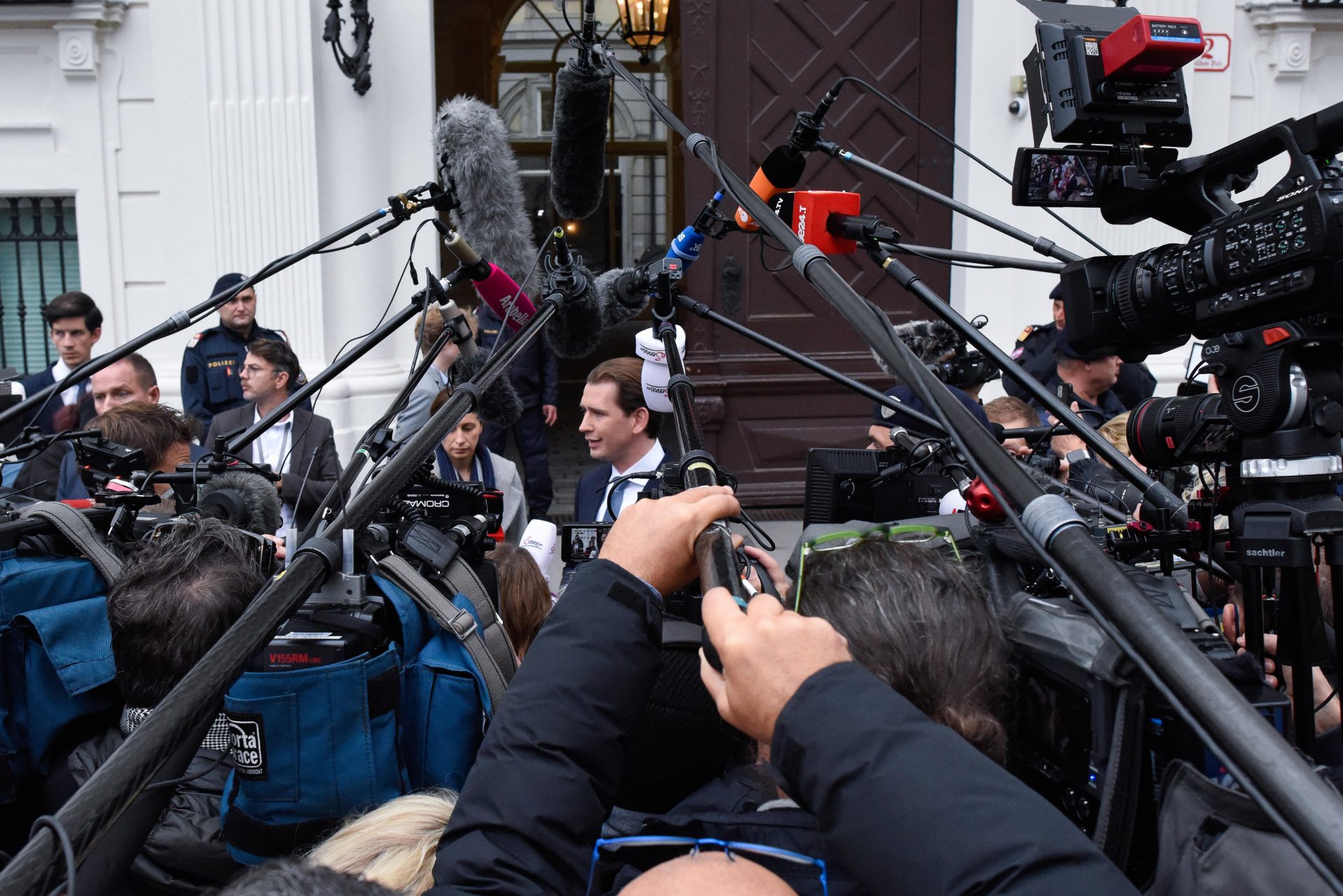Russia’s tyrannical moderniser Peter the Great founded Saint Petersburg in 1703 on land captured from Sweden. His grand new capital city was built at huge cost in blood and treasure to be Russia’s “window on Europe”. If he had only known that his country would one day annex Königsberg, more than 800km further into the continent to the south west, and rename it Kaliningrad, he might not have bothered.
The historically German city of Königsberg was founded in 1255 by the Teutonic Knights. Throughout the subsequent seven centuries of ebbs and flows of European history, it remained a German city which, with its surrounding region, was part of the Kingdom of Prussia before joining the newly unified state of Germany in 1871.
This long era ended abruptly when the region was captured by the Soviet Union at the end of the Second World War. Although the southern part of what was by then called East Prussia was hived off to the nascent Soviet satellite state in Poland, the Soviet Union retained the main city and most of the region.
This was a consequence of the 1945 Potsdam Agreement between the Allied powers, the US, UK and USSR, in which they worked out what to do with the defeated Germany. In the case of Königsberg, Potsdam largely formalised the lines where the tanks stopped at the end of the war, accepting that it would be impossible to force Stalin to give up direct control of such a juicy strategic asset, even though the Soviet Union or Russia had no significant historic claim or connection to the area.
Most of the region’s remaining German population was then expelled and the territory largely repopulated with Russians.
The Kaliningrad region – which was re-named after the Soviet revolutionary, Mikhail Kalinin – is now a Russian exclave that is slightly bigger than Northern Ireland and less a window through which to observe Europe than a cuckoo ensconced in its nest. It sits uneasily in-between Nato and EU members Poland and Lithuania, completely detached from the distant Russian motherland.
For large periods of its (German) history, Königsberg flourished. It was an important member of the Hanseatic League of cities that dominated North European trade from the 13th to the 17th centuries. But it is perhaps best known as a cosmopolitan centre of European intellectual life.
Large numbers of scientists, mathematicians and writers emerged from Königsberg over the centuries, including the influential Romantic movement author Ernst Hoffmann, whose novella The Nutcracker and the Mouse King was the basis for Tchaikovsky’s ballet The Nutcracker.
Its greatest products, though, were the philosophers Immanuel Kant and Hannah Arendt. Kant (1724-1804) was born, lived and died in Königsberg, rarely ever leaving it even for short trips.
As Kant said, “such a town is the right place for gaining knowledge about men and the world even without travelling” and for half a century, the University of Königsberg was the centre of his life. It was here that he wrote canonical works of enlightenment philosophy such as the Critique of Pure Reason and Perpetual Peace.
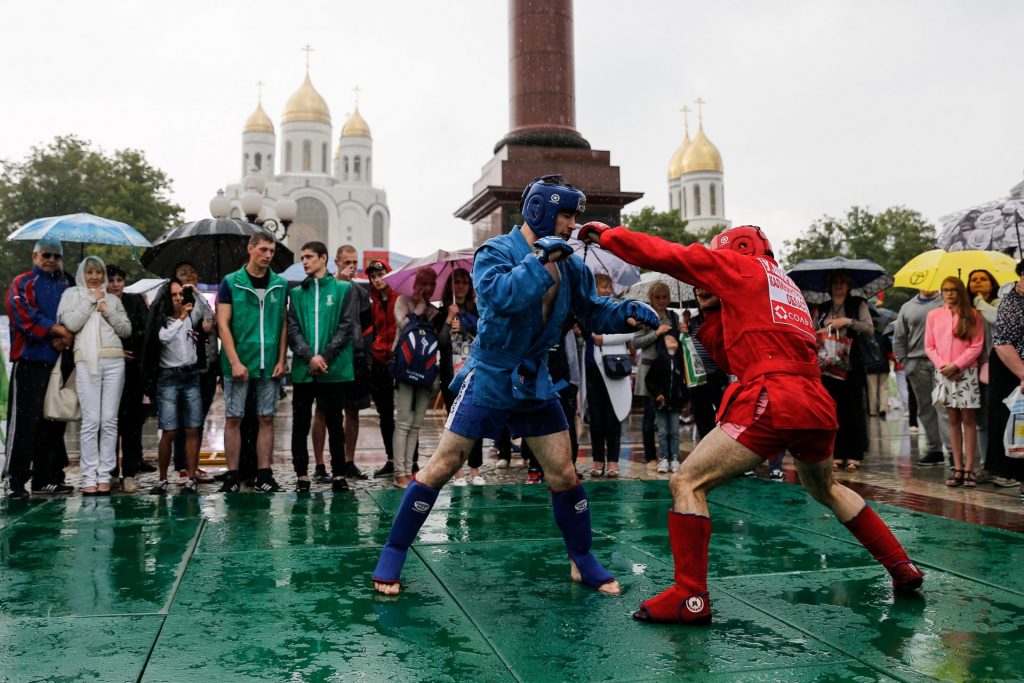
Kant was fortunate to have lived in Königsberg during its pomp. Arendt
was less lucky. She left in 1922 at the age of 15 to study in Berlin and, as a Jew, had to flee Germany altogether in 1933 for exile in Paris following the rise of the Nazis.
In 1941, after being interned following the Nazi occupation of France, she escaped to the US and remained there for the rest of her life. Even had Arendt desired it, a post-war return to the city of her upbringing was out of the question. There was no place in Stalin’s Soviet Union for the towering intellectual who would go on in 1951 to write her masterwork The Origins of Totalitarianism.
After the Soviet occupation and remake as Kaliningrad, the region’s long run of economic and intellectual significance came to an end. The old city had been physically destroyed too by RAF bombing raids in 1944 and the Soviet siege in 1945, which reduced almost all its rich architectural heritage to rubble.
In its place, numerous typically Soviet concrete blocks were rapidly built to accommodate the Russians and other citizens of the Soviet empire who were swiftly moved in to replace the roughly two million Germans who had either been killed, fled or expelled during the war.
Many of these Russian incomers were connected to what soon became Kaliningrad’s new role as a military headquarters. The region was designated as a ‘closed military zone’ by the communist authorities, which meant it was completely shut off to foreigners and only accessible with an official permit even to Soviet citizens. During the Cold War, Kaliningrad’s location enabled the USSR to exert considerable military influence over the Baltic Sea and Scandinavia.
Kaliningrad’s geostrategic significance has increased since the collapse of communism and the liberation of neighbouring Poland and Lithuania from Kremlin dominance to become Nato and EU members.
Kaliningrad is now both an asset and a vulnerability for Russia. It enables Moscow to project power into its adversaries’ territory by headquartering its navy’s Baltic Fleet in the region and base other military assets such as its modern, nuclear-capable Iskander missiles there, in effect behind enemy lines.

But Kaliningrad is also cut off from the main body of Russia and surrounded by Nato and EU territory.
The connection to Russia proper is maintained through the Kaliningrad Transit Scheme, in which Lithuania facilitates access by issuing transit permits to Russians to cross its territory. Russia would prefer this system to be permit- and visa-free but it mostly works well, given the political and security tensions between the two countries.
Military planners, meanwhile, are much exercised by the question of the Suwalki gap, the narrow, 100km-long strip around the Polish-Lithuanian border that stretches from Kaliningrad to the (for now) Russia-friendly Belarus.
This expanse of flatland could theoretically be used by Nato to cut Kaliningrad off from the rest of Russia, should it be inclined to do so. But, perhaps more pertinently, it is difficult to defend and could conversely be used by Russia to sever the Baltic states of Lithuania, Latvia and Estonia from their Nato and EU partners.
The best way to forestall such tensions would be to integrate Kaliningrad more deeply into its natural and historic economic habitat, thus building inter-dependence with its neighbours and allowing its people to share some of the prosperity Poles and Lithuanians have accrued as EU members.
Kaliningrad would certainly benefit from this economically. Despite it having Russia’s only year-round ice-free northern port, its extensive military installations and being the source of 90% of the world’s amber, the region’s economy has struggled over recent years, increasing its reliance on central government subsidies.
Attempts in the 1990s and early 2000s to create ‘freeports’ and ‘special economic zones’ generated more corruption than growth and failed to replace Kaliningrad’s declining manufacturing industries or solve the problem of high transport costs for sending its agricultural produce to Russia proper.
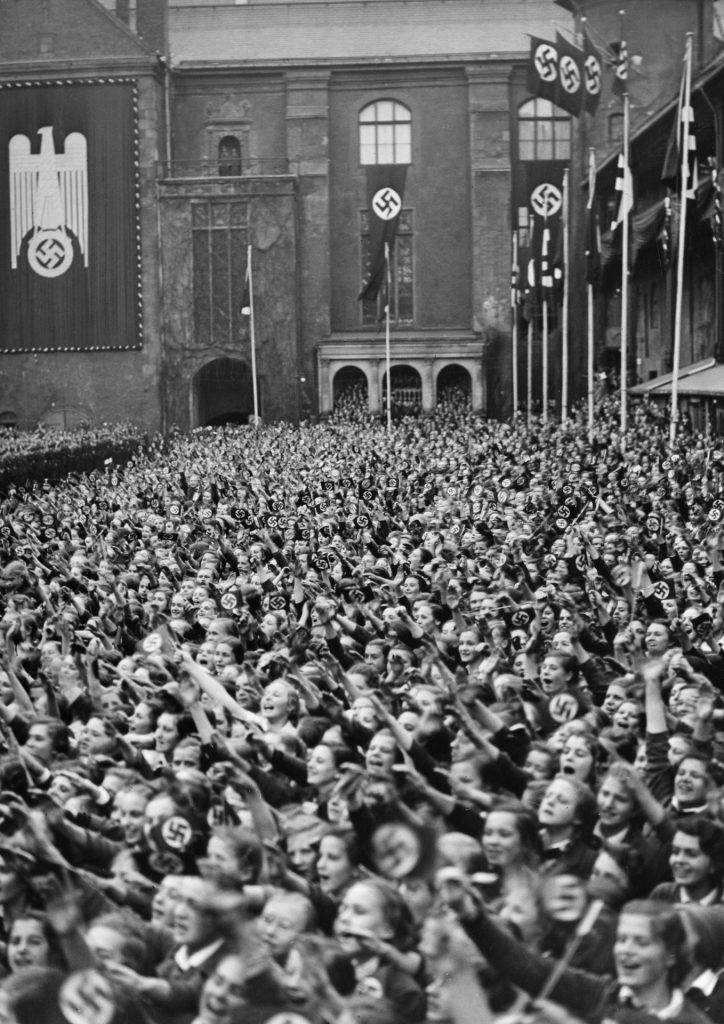
Sporadic efforts have been made to encourage more economic links with the neighbours and some trading and short stay tourism does take place. But enhancing these connections will remain tricky for as long as the prickly and aggressive Putin regime remains in power in Moscow.
Personal experiences of shopping trips and suchlike to Gdansk in Poland a couple of hours drive along the Baltic coast mean that people from Kaliningrad are generally less susceptible than many other Russians to the anti-European propaganda that is a prominent feature of their country’s media nowadays. There is some inevitable sense of existing in a place apart too, with locals sometimes saying they are “going to Russia” when visiting the “mainland”.
Politically, though, the overwhelmingly ethnic-Russian 950,000 population of Kaliningrad region remains largely, albeit passively, supportive of Putin (whose ex-wife, Lyudmila, was born and raised there). There is no significant group within Kaliningrad currently pushing for a change in the region’s status. Nor is there, as yet, any sign of serious agitation arising from an awareness of their Polish and Lithuanian neighbours’ generally higher living standards.
Even so, and despite misgivings from Moscow, some local efforts to reverse the Soviet eradication of all traces of Kaliningrad’s German history and culture are in progress.
Königsberg cathedral and parts of the old city centre have been either restored or reconstructed to resemble their former glory. Kant’s status – if not his enlightenment ideas – is being embraced more too, with a statue, “Yes We Kant” fridge magnet souvenirs and the renaming of the city’s modern day main university in his honour as the Immanuel Kant State University of Russia.
However, Arendt’s origins in Kaliningrad and immense importance as an anti-authoritarian thinker are scarcely acknowledged, perhaps unsurprisingly in Putin’s Russia.
And the hugely symbolic remnants of Königsberg Castle remain buried beneath the colossal, hideous and still unfinished House of the Soviets that general secretary Leonid Brezhnev ordered to be constructed on top of it in 1967.
This structure resembles a giant robot’s head and is the subject of the timeworn Eastern European joke that “the House of the Soviets is the most beautiful place in Kaliningrad because, if you stand on top of it, it’s the only place from which you can’t see the House of the Soviets”.
Europe is, of course, full of regions that have changed hands by conquest throughout history. That is a big part of what made it such an unstable, conflict-prone continent for centuries.
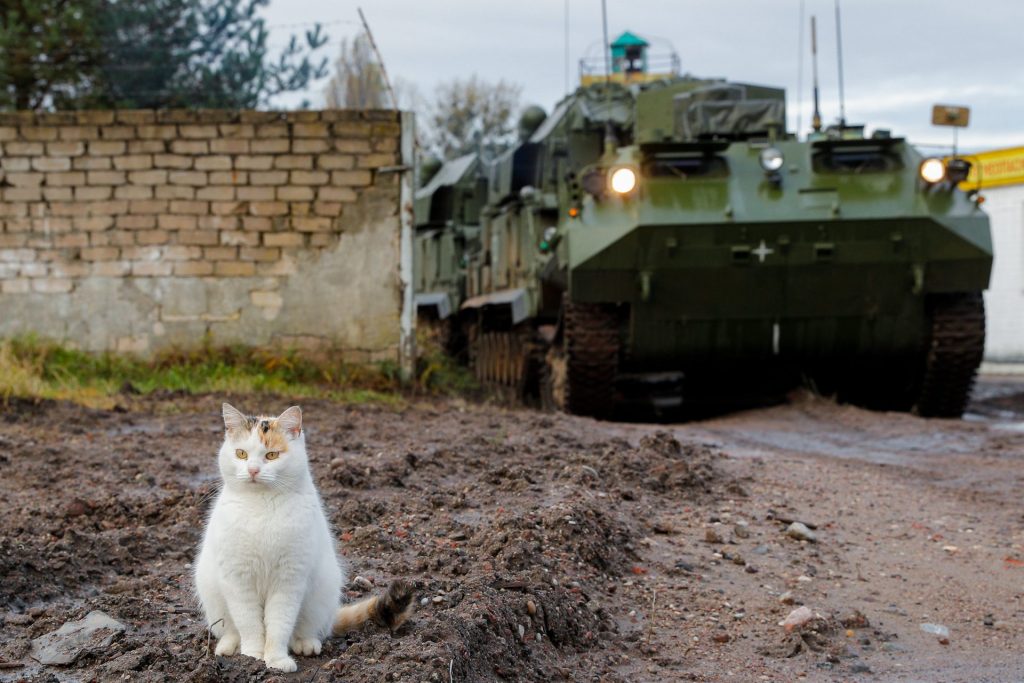
It is also why, after the carnage of the Second World War, there was a widespread acceptance that borders should now be left where they were. For the time being, no-one is seriously pushing to reclaim Kaliningrad, despite its seven centuries of German history as Königsberg and much shorter period under Russian rule.
But since Putin ripped up the peace-preserving precedent that had prevailed in Europe for 70 years by seizing Crimea by force and invading eastern Ukraine in 2014, who knows what might happen in the future. The twists and turns in the story of Kant’s hometown certainly bear out his famous saying that “out of the crooked timber of humanity, no straight thing was ever made”.
THE BURIED ROBOT
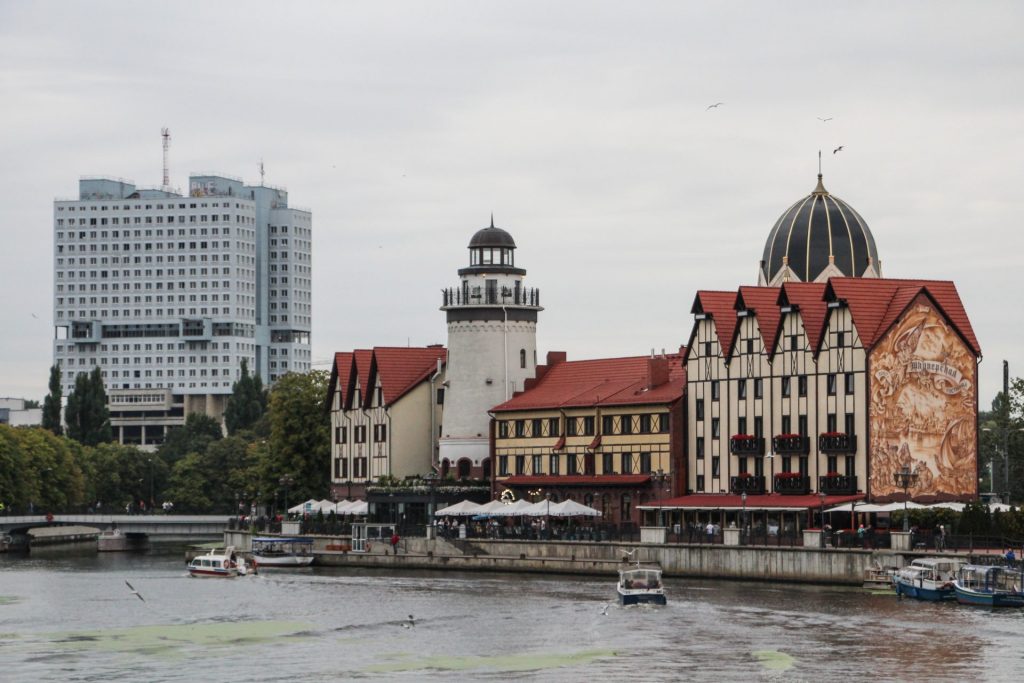
The House of the Soviets – known to locals as the Buried Robot – was built on the site of Königsberg castle, which was badly damaged in the war and then razed to the ground by the Soviets in the 1960s.
Construction on the new building began in 1970 but was never finished. In 1992 there was an attempt to complete the construction with Danish funding but it was abandoned.
Its exterior was painted in 2005, for Kaliningrad’s 60th and Königsberg’s 750th anniversary, and a visit by Vladimir Putin (see above), but the interior remained unusable.
It is now scheduled for demolition.

